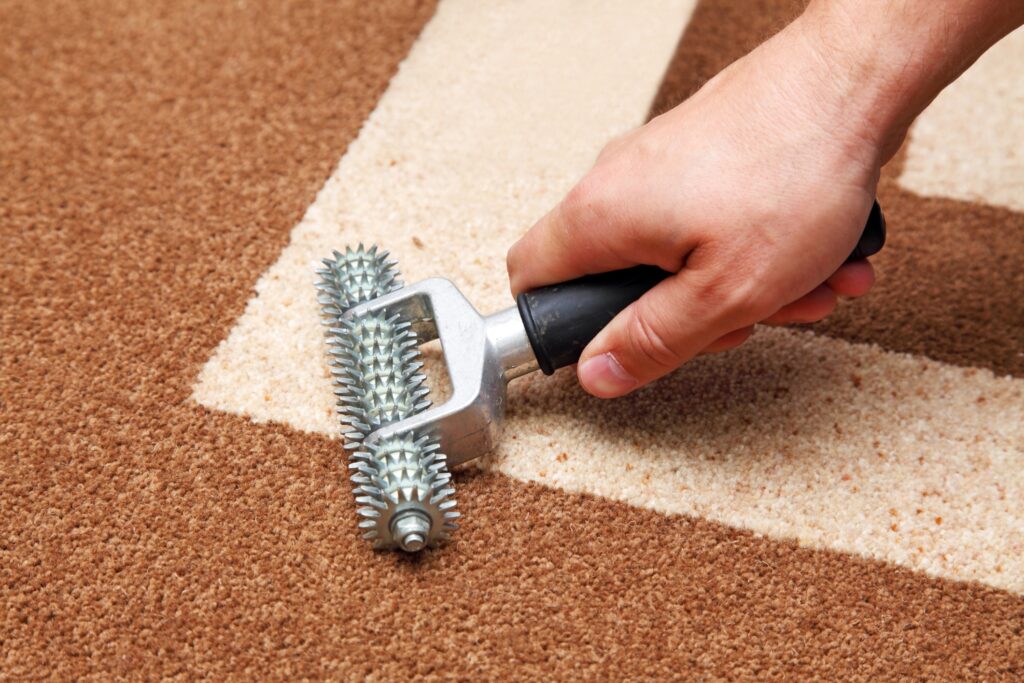In an earlier blog we discussed how to connect carpet seams, providing a step-by-step guide as a help for anyone new to installing carpet. On this blog we’re going to talk about some common mistakes people make that you should avoid if you want your carpet to be look right, last a long time, and be safe to walk on.
The first potential problem we’ll discuss is seam peaking. Seam peaking is when the carpet tents up at the seam instead of lying stretched and flat on the floor. The peaking is the result of the force used when carpets are stretched. The carpet’s backing absorbs the the tension until it reaches the point at which the two pieces of carpet are joined by the seaming tape. The tape is the weak link, and so that tension forces the the tape upward to relieve the tension.
Seam peaking is often caused by heat from using a too-hot iron. Overheating can take some of the twist or release the twist of the yarns, and that will cause a shading , peaking, or discoloration mark down the length of the seam.
It’s possible for seams to peak after they’ve been installed even when the installer prepared the seam and used a good seaming tape. It can be hard to know which carpet seams will peak, but stiffer carpets with thicker backings are more likely to peak than softer, more flexible carpets. What can you do to avoid seam peaking?
Seam sealing is always recommended prior to seaming. This keeps the tension line straight along the carpet backing, and the carpet is less likely to peak or lift by the seam splitting or separating when stretched. It’s also wise to do a seam test before you seam the larger job. Seam a sample piece of carpet using hot melt tape, and then stretch it by hand over a flat surface. If the seam is going to peak, you should be able to see it with these sample pieces when you stretch them.
Other tricks for avoiding seam peaking include:
- Back-rolling the edges of your carpet so that it lies flat before you make your seams. You want the carpet to forget the rolled state it was stored in and get used to being flat.
- Pre-stretching the carpet for the recommended 16 to 18 inches on either side of the seam.
- Using a cooler setting on your iron or our Kool Glide iron when you attach the seaming tape to the carpet. The synthetic backings on tufted carpets will curl or shrink if exposed to too much heat.
- Allowing the seam to completely cool before stretching the carpet out.
- Cupping is an issue, and seaming on a flat surface and following up with a seam weight behind the heated area will help keep the seam flat as it cools.
- Using wider seaming tapes. The tension in the carpet will be dispersed better with a wider tape.
When carpet is installed correctly and with the proper care, the seams between the pieces should be nearly invisible. It will lay flat and no sections will be at risk of coming apart or unraveling. Seam peaking is both an unsightly problem and a potential safety risk. Please follow the above advice to make sure it doesn’t happen to a nice carpet near you. And for the staples, staple guns, mallets, mallet caps, L-cleats, or finish nails you need for your flooring project, shop our Pro Drive HD™ line of supplies.


